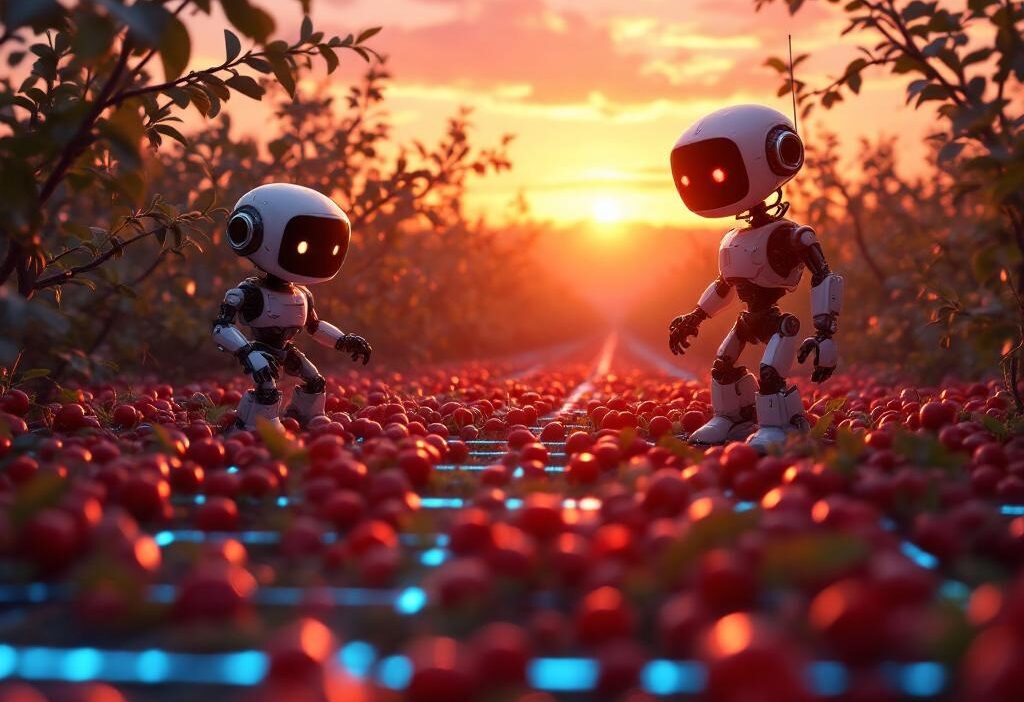The O(n) Club: Cherry Pickup — How to Outwit a Grid of Thorns, Robots, and Regret
⚡ TL;DR
Pick cherries in a grid, dodge the thorns, go from start to finish and back—or, if you’re feeling spicy, picture two robots skipping through the orchard at once. Brute force is a CPU barbecue. Solution? 3D DP, or cry in O(4^n) time.
// Brute force: Only try this if you <em>enjoy</em> seeing Time Limit Exceeded int maxCherries(int[][] grid, int x1, int y1, int x2, int y2) { // Expensive exploration of every route—will force you into another career path return 0; }
🧠 How Devs Usually Mess This Up
Most devs let hope drive: “I’ll send the hero forward, pluck all the cherries, reset the grid, and then run them back for cleanup!” And then reality sets in. Cherries picked up vanish forever—so your return trip has the nutritional value of cardboard. Others try solving forward and backward separately, combine the values, and invent a new wrong answer. Occasionally, someone simply ignores thorns until it’s too late. We’ve all been there.
🔍 What’s Actually Going On
Instead of two back-and-forth strolls, think of one glorious synchronized dance: two travelers (you and your more productive alter ego) start from (0,0) and go step-by-step together—each can only move down or right, but you’re only allowed one cherry per cell (one mouth per fruit, please!). Hit a thorn? Path instantly dies—imagine a robot flailing into a spiky bush, then rebooting the algorithm. The magic is to treat this like one giant race with two runners, track both positions, and keep memoization so you don’t run over the same regret twice.
🛠️ PseudoCode
- Define a DP cache:
dp[r1][c1][c2], where traveler A is at (r1,c1) and traveler B is at (r2,c2),r2 = r1 + c1 - c2(they’ve each moved the same number of steps). - For each state:
- If any traveler is out of bounds or tripped on a thorn (
-1), return “impossible” (Integer.MIN_VALUE, anyone?). - Score from this cell equals cherries in both spots (unless they meet—then, just count one cherry, this isn’t a hackathon).
- Try all 4 combinations: (down,down), (down,right), (right,down), (right,right).
- Memoize each result: like building a regret-proof GPS. Avoid repeating dead ends.
- Base case? Both at the bottom right. Pop the confetti, they survived!
- If any traveler is out of bounds or tripped on a thorn (
💻 The Code
public int cherryPickup(int[][] grid) {
int n = grid.length;
int[][][] memo = new int[n][n][n];
for (int[][] row : memo)
for (int[] col : row)
Arrays.fill(col, Integer.MIN_VALUE);
return Math.max(0, dp(grid, 0, 0, 0, memo));
}
private int dp(int[][] grid, int r1, int c1, int c2, int[][][] memo) {
int n = grid.length;
int r2 = r1 + c1 - c2;
if (r1 >= n || c1 >= n || r2 >= n || c2 >= n ||
grid[r1][c1] == -1 || grid[r2][c2] == -1) return Integer.MIN_VALUE;
if (r1 == n - 1 && c1 == n - 1) return grid[r1][c1];
if (memo[r1][c1][c2] != Integer.MIN_VALUE) return memo[r1][c1][c2];
int cherries = grid[r1][c1];
if (r1 != r2 || c1 != c2) cherries += grid[r2][c2];
int bestNext = Math.max(
Math.max(dp(grid, r1+1, c1, c2, memo), dp(grid, r1, c1+1, c2, memo)),
Math.max(dp(grid, r1+1, c1, c2+1, memo), dp(grid, r1, c1+1, c2+1, memo))
);
if (bestNext != Integer.MIN_VALUE) cherries += bestNext;
memo[r1][c1][c2] = cherries;
return cherries;
}
⚠️ Pitfalls, Traps & Runtime Smacks
- Stepping on a thorn? Immediate algorithmic faceplant (abort that path, please).
- If both bots land together, only count one cherry—no cherry clones allowed.
- No memoization? Watch your solution melt in quadratic despair—O(n3) for both time and space, so hardware isn’t optional.
- Works for n ≈ 50. For infinite grids, invent quantum computers first.
🧠 Interviewer Brain-Tattoo
“If you solve Cherry Pickup with two traversals, you get two regrets. Model both walkers together, and your interviewer might even smile.”








































































































































































































































































